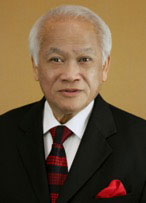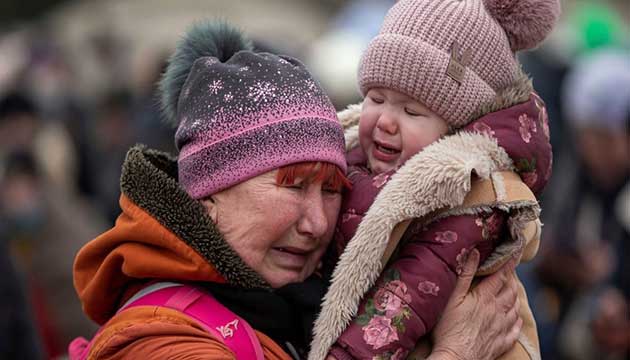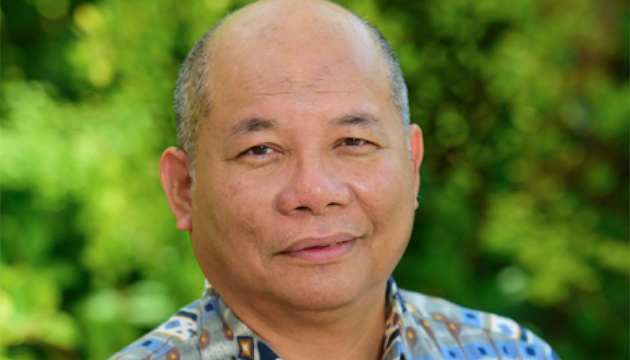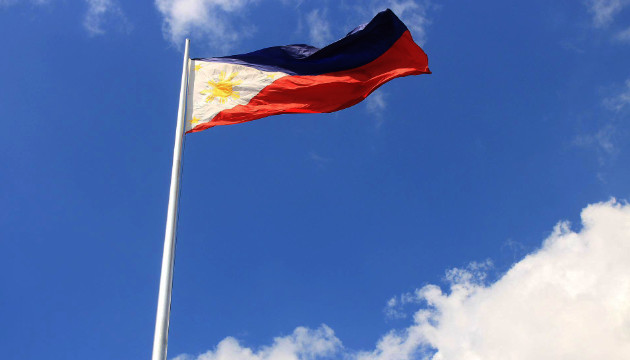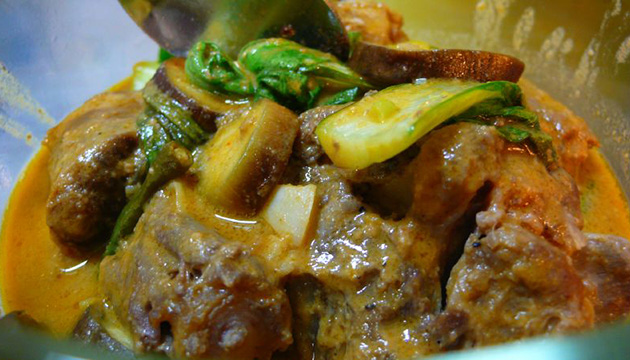February 16, 2025: Canada just celebrated the 60th Anniversary – the Diamond Jubilee - of its national flag with its simple yet stylish design – a maple leaf (the floral emblem of the country) set in Canada’s two official colors of red and white.
Indeed, this is a momentous occasion for all of Canada’s loyal daughters and sons – by birthright or by choice – particularly at this time when we re-appraise the level of trust, or lack of it, we have on our relationship with our southern neighbour.
At press time, I decided to re-print the article I wrote during Canada’s Golden Jubilee of its flag – 10 years ago on February 15th – for my Medisina at Politika column in Pilipino Express, with my italicized added inserts in brackets, partly to reflect current Canadian sense of palpable joy and pride during these trying times for our nation and partly to include a historical event I meant to refer to then, that of former Prime Minister Jean Chretien’s declaration of February 15, 1996 as National Flag Canada Day. He said:
“Canada's flag is a symbol that unites Canadians and expresses throughout the world and always our pride in being Canadian. The maple leaf flag pays homage to our geography, reflects the grandeur of our history and represents our national identity. Our flag thus honours Canadians of all origins who through their courage and determination, have helped to build and are continuing to build our great country: a dynamic country that is open to the future. Therefore, I, Jean Chrétien, Prime Minister of Canada, declare that February 15 will be celebrated henceforth as National Flag of Canada Day”
My Golden Jubilee Reflection in 2015
Here’s the piece I wrote then, Golden Jubilee of the Canadian flag: A Personal Reflection,
introducing it with the pictorial display of the two designs – the Canadian Red Ensign and the Canada Pearson Pennant – that preceded the present.
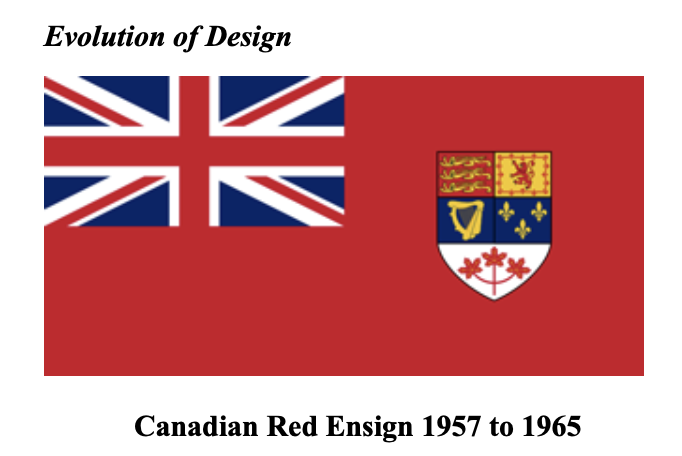
Canada’s red ensign used from 1957 to 1965. Several variations of this flag had been evolving since 1868, just after confederation.
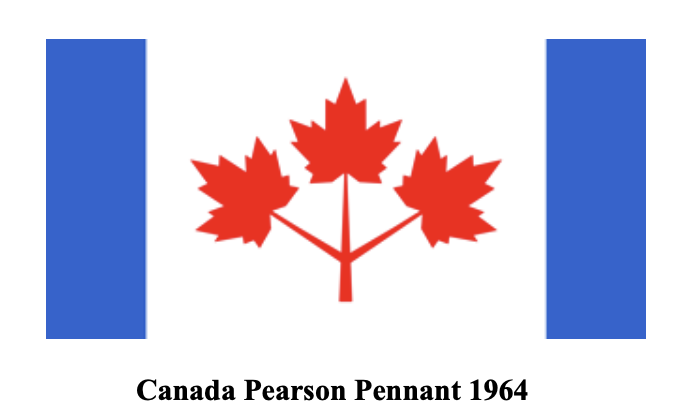
“The Pearson Pennant,” Prime Minister Lester B. Pearson’s preferred design for the new Canadian flag in 1964
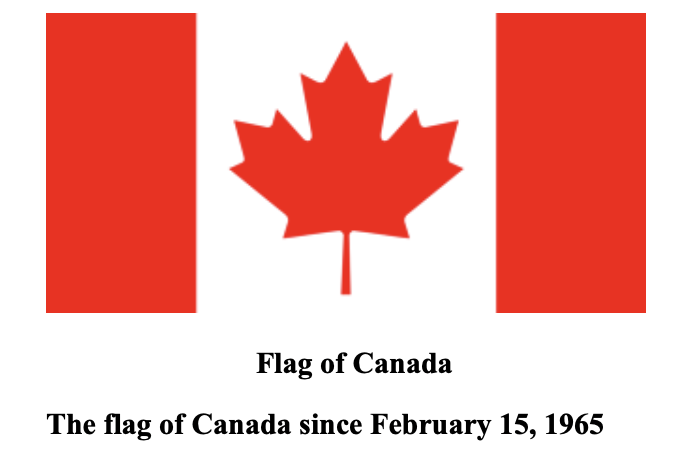
February 15 marked the golden jubilee of the Canadian flag. On this momentous day in 1965, the Canadian Red Ensign was lowered from the Peace Tower in Ottawa and the new red maple leaf flag, at exactly noon, hoisted and inaugurated as the National Flag of Canada. It is simple and stylish in design – a maple leaf, the chosen floral emblem of the country since the early 18th century, set in Canada’s two official colors of red and white.
At this juncture I add the prescient words of the Right Honourable Paul Martin, Sr. (father of Canada’s 21st Prime Minister, The Rt. Hon. Paul Martin, Jr.) to the House of Commons, as he recalled them, when he took the initiative much earlier in 1945 to secure this national symbol: “The ideal flag should be easily recognizable, and symbolic of our great country and of its position as a sovereign state in the family of nations.” Easily recognizable in design and symbolic of the country it is, indeed!
Acrimonious Debate
Yet, it took nearly two decades of acrimonious debate from when it was first announced in the Speech from the Throne in September 1945 as official aspiration during the time of Prime Mackenzie King to when it was officially inaugurated on February 15, 1965 as Canada’s flag, during the administration of Prime Minister Lester B. Pearson.
Such was the intensity of controversy that, in fact, outbursts of boos were heard from the audience when then Prime Minister Pearson – a Nobel Peace Prize recipient – boldly announced at the Convention of the Royal Canadian Legion held in Winnipeg in May 1964:
“Canada would have its own flag.”
Boldly, I note of the announcement, since the issue was very controversial. Subsequent debates in the House of Commons were heated. Ostensibly, the issue became so emotional that the House referred it to a Joint Committee of the Senate and of the House for further study and recommendations. Most likely, as had been suggested by others, referral to the Committee was more for the purpose of lowering the temperature of debate.
Passionate division of views had not, in fact, subsided when it returned to the House for final deliberations. To put an end to the apparently unending debate and consequent delay for the consideration of other House agenda, the government invoked closure on debate.
Ten days before Christmas on December 15, 1964, nearly two-thirds of the members of the House of Commons (142 versus 85) voted to adopt the flag as we have it today. It was officially adopted two months later at a ceremony held within the precinct of Parliament in the nation’s capital, attended by thousands in the midst of winter who sang O Canada and God Save the Queen.
Said the Honourable Speaker of the Senate, Maurice Bourget, at the time:
“The flag is the symbol of the nation’s unity, for it, beyond any doubt, represents all the citizens of Canada without distinction of race, language, belief or opinion.”
Half a century hence, today, what does the Canadian flag reflect to me?
Triumph of Leadership
I share this vignette on the history of the Canadian flag – from its conception through the unduly prolonged gestation and debate to its triumphant birth as a national emblem – because it is a timely reminder, as it reminds me, that leadership, at whatever level of government, with a vision and determination can inspire a community or a nation to overcome challenges.
I see this quality of leadership displayed and reflected during the tumultuous journey of our red maple leaf flag spanning seven decades from an idea to reality.
Reflections: Mirror of Who We Are as a Nation
For me and, I trust, for all of us, the Canadian flag is like a mirror. It reflects Canada’s outstretched arms welcoming immigrants who seek better opportunities and receiving refugees who seek protection. {And in doing so, help build our common nation.}
I see from this Canadian mirror fellow citizens – indigenous, natural-born and naturalized – sharing whatever they could and giving of themselves in elected or non-elected public service and in one’s work or voluntary community service to make it bearable in life, prosperous and safe for all of us. {I see our sense of civic engagement reflected at the work of Immigration Partnership Winnipeg, hosted by the Social Planning Council of Winnipeg, facilitating the integration of newcomers.}
Like Paul Martin Sr. 70 years ago, I see in our flag the greatness of our country. {our cherished values: freedom, peace, and justice}
Like Hon. Maurice Bourget 50 years ago, I see in it our nation’s unity in the midst of our diversity. {I see it these days as we stand courageous together in front of the US President’s unconscionable treatment of its best ally in war, peace and foreign humanitarian aid}
Indeed, I feel our collective sense of pride and joy mirrored in our Canadian flag when we duly exercise our deep sense of others as a nation for fellow citizens of Canada and of the world.


